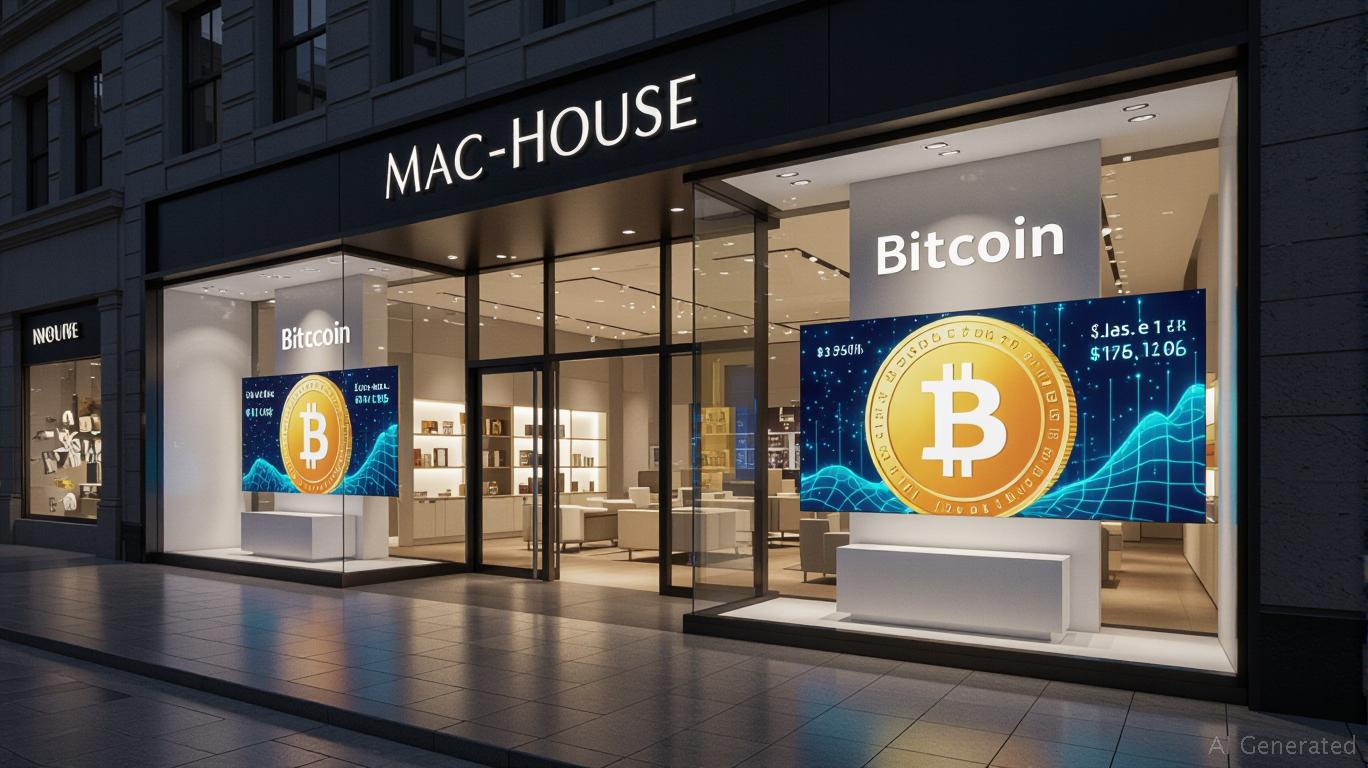Mac-House's Bitcoin-Led Growth Strategy: A Blueprint for Blockchain's Institutional Mainstreaming
Theodore QuinnMonday, Jul 14, 2025 1:59 am ET
![]() 2min read
2min read
As Bitcoin's price flirted with $100,000 in early 2025, a quiet revolution unfolded in Japan's retail sector. Mac-House, a $3.2 billion retailer with 1,200 stores nationwide, announced a bold shift: allocating $12 million to Bitcoin by September 2025, funded through a private placement led by EVO FUND. This move wasn't merely a speculative bet—it was a strategic pivot toward institutionalizing blockchain as a core part of its financial strategy.

Mac-House's Bitcoin allocation employs a , purchasing fixed amounts of Bitcoin monthly while adjusting volumes during market downturns. This approach reduces volatility risk and aligns with its partnership with , a crypto mining firm, to directly generate Bitcoin through computational power. By mid-2025, this dual strategy had secured 1,200 BTC, with plans to expand mining operations to 5,000 BTC annually by 2026.
The payoff? Mac-House's stock surged 170% year-to-date by July 2025, outperforming Japan's Nikkei 225 by 85 percentage points, as investors bet on its blockchain-first model.
Mac-House isn't alone. Japan's retail sector is leading a broader shift:
- , a lesser-known tech firm, accumulated 6,796 BTC by May 1, 2025, propelling its stock 1,700% YTD.
- , a media conglomerate, holds 3,800 BTC as a treasury reserve, a move that stabilized its balance sheet during yen volatility.
The catalyst? :
- Japan's FSA proposed slashing crypto capital gains taxes from 55% to 20%, aligning with stock-like treatment.
- The Bank of Japan's 0.25% rate hike in 2024 exacerbated yen depreciation, pushing firms to seek Bitcoin as a hedge against negative real rates (yen bond yields at 1.5% vs. inflation at 3.7%).
Mac-House's moves mirror a global shift:
- attracted $133 billion in 2024, with SPDR and Grayscale products dominating flows.
- and signal that Bitcoin is now a mainstream asset class.
Crucially, is accelerating adoption. The EU's MiCA framework and U.S. FIT21 Bill reduced jurisdictional risks, while Japan's approval of Circle's USDC stablecoin in March 2025 provided institutional-grade liquidity.
Bitcoin's 40% price swings in 2025 test even the most disciplined investors. Mac-House's safeguards include:
1. : Spreading purchases reduces exposure to timing risks.
2. : Direct Bitcoin generation lowers acquisition costs and provides a “floor” price.
3. Diversification: Allocating 5% of its $12 million to Ethereum and stablecoins to balance volatility.
Investors can capture Mac-House's strategy in three ways:
Mac-House's Bitcoin-led growth isn't just a retail story—it's a blueprint for blockchain's mainstreaming. By integrating crypto into its financial and operational strategy, the company has positioned itself at the forefront of a $2.5 trillion Japanese retail sector ripe for disruption.
For investors, the takeaway is clear: institutions are no longer waiting for Bitcoin's “mainstream moment.” They're building it—and the early movers, like Mac-House, will reap the rewards.
The question isn't whether blockchain will go mainstream—it's who will profit most from its rise. Mac-House's strategy offers a roadmap.
You may also like...
Diddy's Legal Troubles & Racketeering Trial

Music mogul Sean 'Diddy' Combs was acquitted of sex trafficking and racketeering charges but convicted on transportation...
Thomas Partey Faces Rape & Sexual Assault Charges

Former Arsenal midfielder Thomas Partey has been formally charged with multiple counts of rape and sexual assault by UK ...
Nigeria Universities Changes Admission Policies

JAMB has clarified its admission policies, rectifying a student's status, reiterating the necessity of its Central Admis...
Ghana's Economic Reforms & Gold Sector Initiatives

Ghana is undertaking a comprehensive economic overhaul with President John Dramani Mahama's 24-Hour Economy and Accelera...
WAFCON 2024 African Women's Football Tournament

The 2024 Women's Africa Cup of Nations opened with thrilling matches, seeing Nigeria's Super Falcons secure a dominant 3...
Emergence & Dynamics of Nigeria's ADC Coalition

A new opposition coalition, led by the African Democratic Congress (ADC), is emerging to challenge President Bola Ahmed ...
Demise of Olubadan of Ibadanland
Oba Owolabi Olakulehin, the 43rd Olubadan of Ibadanland, has died at 90, concluding a life of distinguished service in t...
Death of Nigerian Goalkeeping Legend Peter Rufai

Nigerian football mourns the death of legendary Super Eagles goalkeeper Peter Rufai, who passed away at 61. Known as 'Do...




